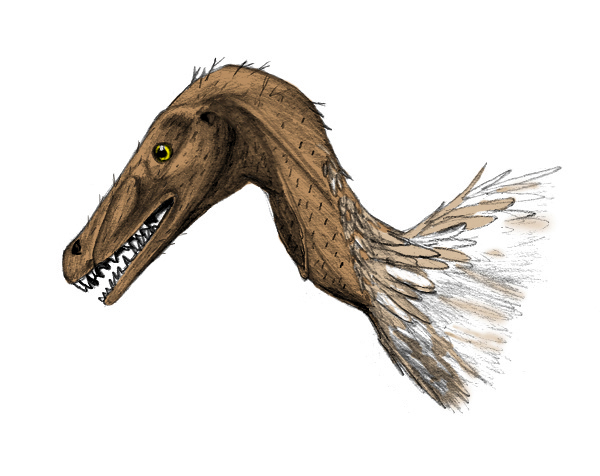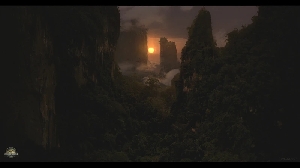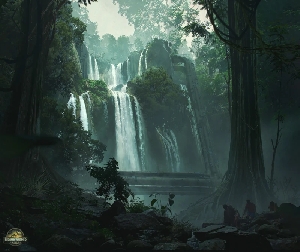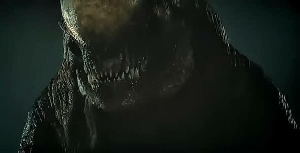A Djadochta Reclassification of Three Dromaeosaurids
Dinosaurs Forum Topic

Suchosaurine
MemberCompsognathusMar 20, 20184117 Views0 Replies
Currently there are five known dromaeosaurs from the Djadochta Formation; Halszkaraptor escuilliei, Mahakala omnogovae, an indeterminate dromaeosaur, Velociraptor monogoliensis, and Tsaagan mangas. It’s very odd to note that T. mangas and V. monogoliensis are different genera but share the same ecological niche; therefore I propose that Tsaagan mangasshould be sunk into Velociraptor mangas.
Overview
“Tsaagan mangas” was found in 1996 in the Djadochta Formation within the Gobi Desert, and was initially considered another specimen of Velociraptor monogoliensis. In May of 1998 a CAT-scan was performed and was considered a new genus. It was formally described by Norell et al. (2006) in December. IGM 100/1015 is separated from Velociraptor by different layers, however the research is over a decade old. Many discoveries over maniraptor phylogeny have been found, and I conclude that the differences between the genera does not warrant a new genus, rather that Tsaagan mangas should be reclassified.
The main features that warranted a new genus were stated for the skull:
- The skull is smoother and more robust.
- Autapomorphies such as elongated paroccipitals and basipterygoids at the back of the cranium.
- The jugal connects to the squamosal.
Norell et al. (2006) conducted a cladistic analysis concluded that T. mangas was in Velociraptorinae. Pittman et al. (2010) concluded that it was closer to Linheraptor exquisitus, however Senter and Turner (2011) and Makovicky and Norell (2012) argued that L. exquisitus was a junior synonym of T. mangas. Xu et al. (2015) rejected this synonymy in their paper: Late Cretaceous fine Linhe Microraptor ( Linheraptor exquisitus ) classification position.
Considering the probability of Linheraptor being Tsaagan suggests that a new paper should be published before we can jump to conclusions. If Linheraptor really is Tsaagan, it would indicate that there would be two new species of Velociraptor spp.; V. exquisitus and V. mangas.
I believe that the differences between L. exquisitus and T. mangas do not warrant new genera, and that both Linheraptor and Tsaagan should be considered junior synonyms of Velociraptor. There is always the possibility that I am completely wrong. As of March of 2018 we should await for new material of Tsaagan and Linheraptor; but until new material is made aware I will still stand by my original conclusion. - Norell, M.A.; Clark, J.M.; Turner, A.H.; Makovicky, P.J.; Barsbold, R.; Rowe, T. (2006). “A new dromaeosaurid theropod from Ukhaa Tolgod (Ömnögov, Mongolia)”. American Museum Novitates. 3545: 1–51. doi:10.1206/0003-0082(2006)3545+[1:ANDTFU]2.0.CO;2.
- Xu, X., Choinere, J., Pittman, M., Tan, Q., Xiao, D., Li, Z., Tan, L., Clark, J., Norell, M., Hone, D.W.E. and Sullivan, C. (19 March 2010). “A new dromaeosaurid (Dinosauria: Theropoda) from the Upper Cretaceous Wulansuhai Formation of Inner Mongolia, China” (PDF). Zootaxa (2403): 1–9. Retrieved 2010-03-19.
- Senter, Phil (2011). “Using creation science to demonstrate evolution 2: morphological continuity within Dinosauria (supporting information)”. Journal of Evolutionary Biology. 24 (10): 2197–2216. doi:10.1111/j.1420-9101.2011.02349.x. PMID 21726330.
- Alan Hamilton Turner, Peter J. Makovicky and Mark Norell (2012). “A review of dromaeosaurid systematics and paravian phylogeny”. Bulletin of the American Museum of Natural History. 371: 1–206. doi:10.1206/748.1.
- Xu Xing; Michael Pittman; Corwin Sullivan; Jonah N. Choiniere; Qing Wei Tan; James M. Clark; Mark A. Norell; Wang Shuo (2015). “The taxonomic status of the Late Cretaceous dromaeosaurid Linheraptor exquisitus and its implications for dromaeosaurid systematics”. Vertebrata PalAsiatica. 53 (1): 29–62. 3/20/18
Replies to A Djadochta Reclassification of Three Dromaeosaurids
Hey Guest, want to add your say?
Are you an avid Jurassic World fan looking for a dedicated online community of likeminded fans? Look no further! Create your own profile today and take part in our forums and gain XP points for all the content you post!









